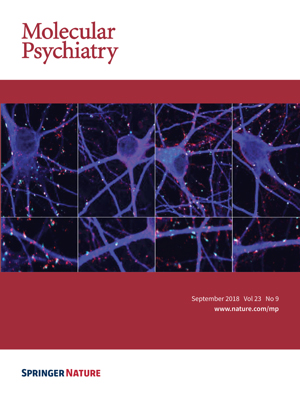Andrew’s paper “Ankyrin-G Regulates Forebrain Connectivity and Network Synchronization via Interaction with GABARAP” has been accepted for publication in Molecular Psychiatry! This collaborative work gives important insight into the effects of ANK3 dysfunction on forebrain network activity, with strong implications for bipolar disorder. GABAergic circuits are critical for the synchronization and higher order function of brain networks, and defects in this circuitry are linked to neuropsychiatric diseases, including bipolar disorder, schizophrenia, and autism. Work in cultured neurons has shown that ankyrin-G plays a key role in the regulation of GABAergic synapses on the axon initial segment and somatodendritic domain of pyramidal neurons where it interacts directly with the GABAA receptor associated protein (GABARAP) to stabilize cell surface GABAA receptors. Here, we generated a knock-in mouse model expressing a mutation that abolishes the ankyrin-G/GABARAP interaction (Ank3 W1989R) to understand how ankyrin-G and GABARAP regulate GABAergic circuitry in vivo. We found that Ank3 W1989R mice exhibit a striking reduction in forebrain GABAergic synapses resulting in pyramidal cell hyperexcitability and disruptions in network synchronization. In addition, we identified changes in pyramidal cell dendritic spines and axon initial segments consistent with compensation for hyperexcitability. Finally, we identified the ANK3 W1989R variant in a family with bipolar disorder, suggesting a potential role of this variant in disease. Our results highlight the importance of ankyrin-G in regulating forebrain circuitry and provide novel insights into how ANK3 loss-of-function variants may contribute to human disease. Congratulations to Andrew and all of our collaborators on this project!
You can see the online published version here.











